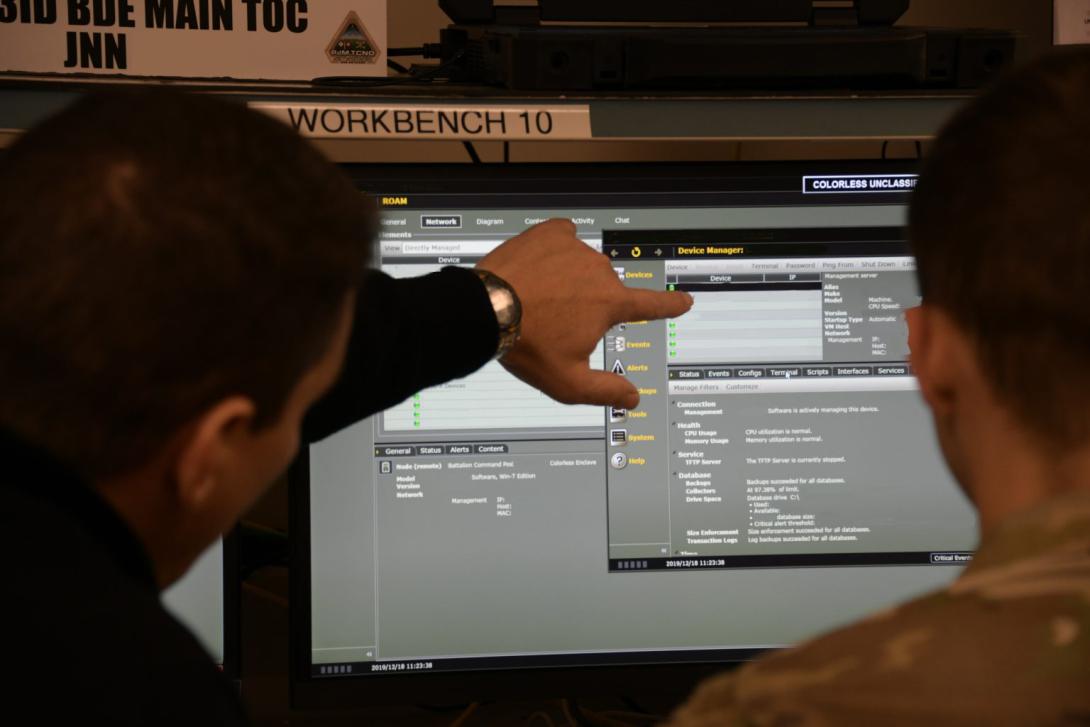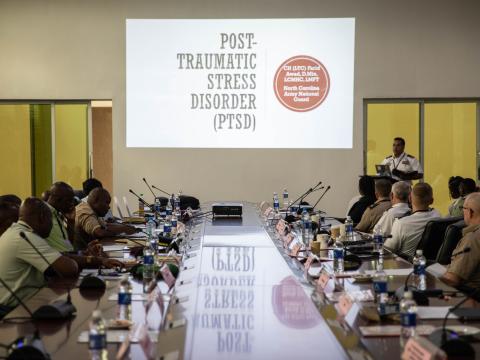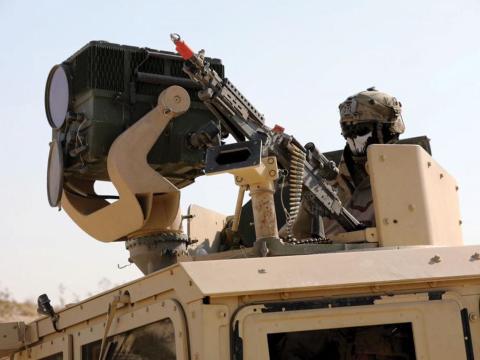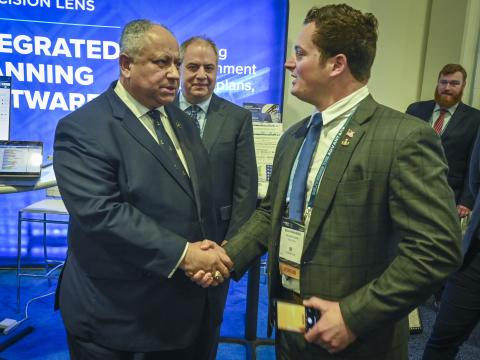Army Adopts New Unified Network Operations Acquisition Strategy
The U.S. Army is adopting a new approach to acquiring capabilities for its Unified Network Operations (UNO), according to Mark Kitz, program executive officer for command, control and communications-tactical (PEO-C3T).
The new strategy is expected to allow more rapid fielding of new capabilities by taking advantage of industry’s research and development investments and newly available technologies.
UNO is expected to integrate network operations capabilities based on an open framework, aggregating network data to enable common planning, configuration, management, monitoring and defense of the network. It will be accomplished through the integration, co-hosting and federation of multiple network operations systems from hand-held devices to the enterprise, according to an Army website. Furthermore, the site adds, UNO efforts simplify and reduce the number of network management tools communication officers use to manage and defend the tactical communications network and assures uninterrupted access to critical communications and information links, such as satellite communications; positioning, navigation and timing; and intelligence, surveillance and reconnaissance) across a multidomain architecture, even when operating in a contested, congested and competitive operating environment.
“The PEO strategy is evolving when it comes to UNO because I want to hear from you, and I've heard from some really strong teams. One, there's capability out there today that could be leveraged as a starting point. So, we're gonna go after some prototypes. You're going to see a strategy where we're going to look to prototype our UNO capability,” Kitz told the audience September 26 at an event hosted by AFCEA’s Aberdeen Chapter. “Second, I think we have got to incentivize an agile methodology. Today, I cannot give you the requirements for the whole future of a program like UNO. Industry has to prove to me that they can set up, stand up and run an agile process with the government in a really complicated customer environment.”
Paul Mehney, PEO-C3T spokesman noted that the approach is a completely different strategy than the strategy a week ago. The Army had intended to award indefinite-delivery, indefinite-quantity contracts to multiple vendors with a six-year base period of performance. The anticipated award evaluation criteria was expected to include technical factors, cost, past performance and small business participation, according to an Army article published in February.
“The competitive prototyping aspect is absolutely new. We are no longer going to seek a development effort, or a long-term development effort. We want industry to deliver as soon as possible because we believe that there are solutions out there that are applicable to defense,” Mehney stated. “We know that we have some unique circumstances. “We have unique radios. We have unique satellite communications. We have an unique backbone. But there's applicability of commercial software and commercial applications that we believe can be adapted to that through collaboration with industry and government.”
While it is too early to determine whether those prototyping contracts will be in the form of other transaction authorities or some other option, Mehney emphasized the PEO office is “dedicated to maximizing competition” and will still award contracts to multiple vendors.
The change is due in part to emerging solutions from industry that can meet some UNO needs. “We have received feedback from industry indicating that there are industry solutions that are integrated and ready to go now to meet, at least, UNO initial needs. We want to reach out and begin to grab those through competitive prototyping beginning in 2024 and then being executed in 2025,” Mehney explained.
Asked what types of mature solutions the Army is seeing from vendors, Mehney responded, “Middleware products. Then products that manage radio networks, and even products that are beginning to develop to manage satellite communications networks. So, for instance—and this is not yet us giving a requirement to industry—but as low-Earth orbit and medium-Earth orbit capabilities come online from the commercial sector, there are multiple defense partners that are already looking at that capability and saying, ‘Okay, what tools need to mature to manage that capability as it comes online?”’
The Army may not be able to fully take advantage of satellite communications capabilities next year, but it will have several pilot projects in 2024 and 2025.
The initial strategy also “somewhat mandated a middleware,” Mehney added, but no longer. “Now, it's important that any middleware that supports UNO has open standards and open APIs, [application programming interfaces.] The government wants to ensure that any network management solution that we deem appropriate to a requirement can easily integrate into the UNO foundation. What we are not going to do, though, is mandating what that foundation should look like.”
Under the new strategy, the Army will take advantage of funds companies have already invested into research and development. “Every Fortune 500 company does network management. We want to take advantage of some of that investment that's already been made into capability that works. So, we're going to allow industry an opportunity to do that: to bring that foundation of UNO into that initial prototyping activity. If they choose to use something that's been either developed by the government, or existing in the laboratory setting, they can do that too,” Mehney suggested.
Emerging industry partnerships also played a role in the Army’s new direction. “After conducting market research and listening to vendors just in the last couple of months, we have come to realize that products have matured and are maturing and industry partnerships are forming, which is critical to this effort to bring the best of breed,” Mehney offered. “So we believe that there is now an opportunity to meet the demand signal from the field and the Army G6. We believe the time now is right to take advantage of that and offer a competitive prototyping situation.”
Kitz said that programs across his portfolio will seek agile development solutions, but that each may use a different acquisition approach rather than a one-size-fits-all strategy. Besides UNO, he highlighted four other programs: the next-generation Advanced Field Artillery Tactical Data System (AFATDS); Next-Generation Tactical Terminal; Command and Control Computing Environment; and Command Post Integrated Infrastructure.
AFATDS provides fully automated support for planning, coordinating, controlling and executing fires and effects such as mortars, field artillery cannons, rockets and missiles, close air support, attack aviation and naval surface fire-support systems. AFATDS interoperates and integrates with more than 80 battlefield systems, including Navy and Air Force command and control weapon systems and German, French, Turkish and Italian fire-support systems.
The Army will use an iterative approach for developing what Kitz referred to as AFATDS Next. “We are about to embark on a strategy to modernize our fires architecture. It is an opportunity for industry to re-architect and deliver a ground-up capability in getting after our fires applications,” Kitz said, stressing the plural. “I said applications. More than one. So not just recoating AFATDS, not twisting anything into something it wasn't built for, but getting after a true opportunity to build the next-generation fires application.”
The Next-Generation Tactical Terminal, Kitz said, will attempt to consolidate delivery of all satellite communications. “We need to do it at the halt. We need to do it on the move. And we need to do it in a much more common portfolio. The Army has bought a lot of SATCOM terminals, this PEO buys a lot of SATCOM terminals,” he said.




